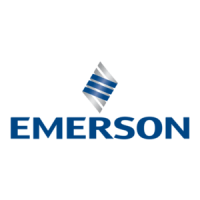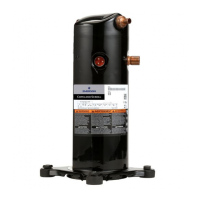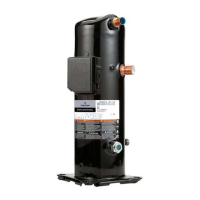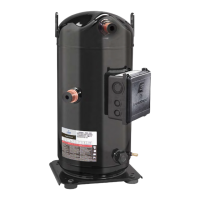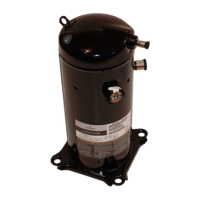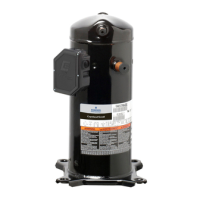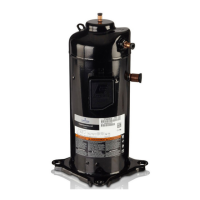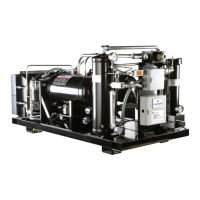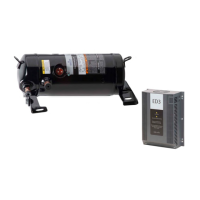8
© 2015 Emerson Climate Technologies, Inc.
AE4-1400 R1
Contaminant Control
Copeland Scroll
compressors leave the factory with
a miniscule amount of contaminants. Manufacturing
processes have been designed to minimize the
introduction of solid or liquid contaminants. Dehydration
and purge processes ensure minimal moisture levels
in the compressor and continuous auditing of lubricant
moisture levels ensure that moisture isn’t inadvertently
introduced into the compressor.
It is generally accepted that system moisture levels
should be maintained below 50 ppm. A lter-drier is
required on all R-410A and POE lubricant systems
to prevent solid particulate contamination, oil
dielectric strength degradation, ice formation, oil
hydrolysis, and metal corrosion. It is the system
designer’sresponsibilitytomakesurethelter-drieris
adequately sized to accommodate the contaminants
from system manufacturing processes that leave
solid or liquid contaminants in the evaporator coil,
condenser coil, and interconnecting tubing plus any
contaminants introduced during the eld installation
process. Molecular sieve and activated alumina are
twolter-driermaterialsdesignedtoremovemoisture
and mitigate acid formation. A 100% molecular sieve
lter can be used for maximum moisture capacity.A
more conservative mix, such as 75% molecular sieve
and 25% activated alumina, should be used for service
applications.
Long Line Sets/High Refrigerant Charge
Somesystemcongurationsmaycontainhigher-than-
normal refrigerant charges either because of large
internal coil volumes or long line sets. If such a system
also contains an accumulator then the permanent
loss of oil from the compressor may become critical.
If the system contains more than 20 pounds (9 kg)
of refrigerant, it is our recommendation to add one
uid ounce of oil for every 5 pounds (15 ml/kg) of
refrigerant over this amount. If the system contains
an accumulator the manufacturer of the accumulator
should be consulted for a pre-charge recommendation.
Other system components such as shell and tube
evaporators can trap signicant quantities of oil and
should be considered in overall oil requirements.
Reheat coils and circuits that are inactive during part of
thenormalcyclecantrapsignicantquantitiesofoilif
system piping allows the oil to fall out of the refrigerant
ow into an inactive circuit. The oil level must be
carefully monitored during system development, and
corrective action should be taken if compressor oil level
falls below the top of the lower bearing bracket for more
than two minutes. The lower bearing bracket weld points
on the compressor shell can be used as a low-oil-level
marker.
Discharge Mufers
Flow through Copeland Scroll compressors is semi-
continuous with relatively low pulsation. External
mufers, where they are normally applied to piston
compressors today, may not be required for Copeland
Scroll compressors. Because of variability between
systems, however, individual system tests should
be performed to verify acceptability of sound
performance. When no testing is performed, mufers
arerecommendedinheatpumps.Ahollowshellmufer
such as the Emerson Flow Controls APD-1 or APD-054
willworkquitewell.Themufersshould belocateda
minimum of six inches (15 cm) to a maximum of 18
inches (46 cm) from the compressor for most effective
operation. The farther the mufer is placed from the
compressor within these ranges the more effective it
may be. If adequate attenuation is not achieved, use a
muferwithalargercross-sectionalareatoinlet-area
ratio. The ratio should be a minimum of 20:1 with a 30:1
ratiorecommended.Themufershouldbefromfourto
six inches (10 -15 cm) long.
Air Conditioning System Suction Line Noise and
Vibration
Copeland Scroll compressors inherently have low sound
and vibration characteristics. However, the sound and
vibration characteristics differ in some respects from
those of reciprocating compressors. In rare instances,
these could result in unexpected sound complaints.
The scroll compressor makes both a rocking and
torsionalmotion,andenoughexibilitymustbeprovided
in the line to prevent vibration transmission into any lines
attached to the unit. In a split system the most important
goal is to ensure minimal vibration is all directions at
the service valve to avoid transmitting vibrations to the
structure to which the lines are fastened. Table 3 lists
designcongurationsfortubingcongurationandbase
valve mounting.
The sound phenomena described above are not usually
associated with heat pump systems because of the
isolation and attenuation provided by the reversing valve
and tubing bends.
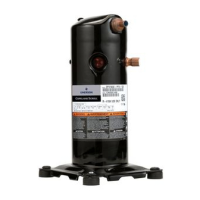
